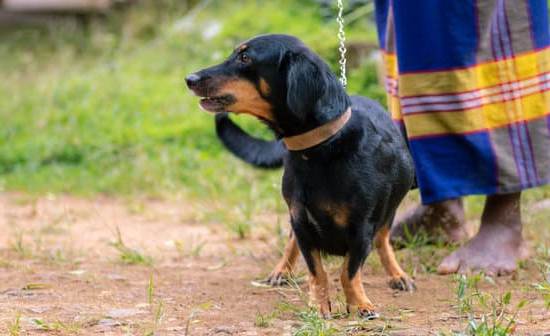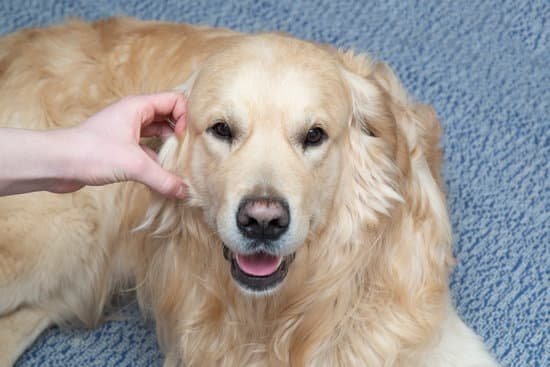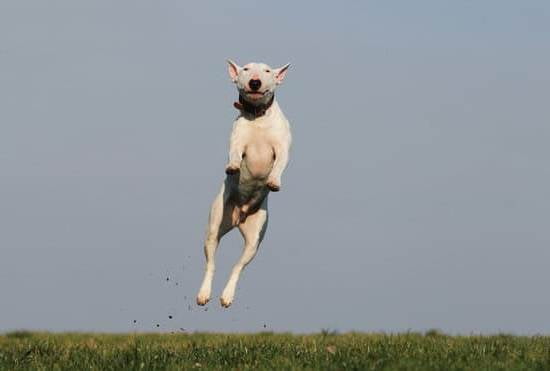Are you wondering how to train your dog to walk on a loose leash? Teaching your furry friend to walk calmly and comfortably by your side is essential for enjoyable walks and good behavior. In this article, we will guide you through the process of loose leash walking, from understanding its importance to the step-by-step training process and troubleshooting common challenges.
First, we will delve into the significance of teaching your dog to walk on a loose leash. Understanding your dog’s behavior and body language during walks is crucial in implementing effective training methods. We will discuss the step-by-step training process for loose leash walking, as well as the appropriate equipment to use. Additionally, we will highlight common mistakes to avoid when training your dog for loose leash walking and provide tips for maintaining this behavior.
Lastly, we will explore the benefits of having a well-trained dog who walks on a loose leash. Whether you are a new pet owner or looking to improve your current walking routine with your furry companion, this comprehensive guide has got you covered.
Importance of Teaching Your Dog to Walk on a Loose Leash
Teaching your dog to walk on a loose leash is an essential skill for both you and your furry companion. It not only makes walks more enjoyable, but it also ensures the safety of both your dog and others around you.
When a dog is constantly pulling on the leash, it can lead to discomfort for both the pet owner and the dog. This behavior can also be dangerous if the dog suddenly lunges or bolts in pursuit of something, potentially causing injury to either party.
Understanding your dog’s behavior and body language during walks is crucial in teaching them to walk on a loose leash. Dogs may pull on the leash for various reasons such as excitement, anxiety, or simply out of habit.
By understanding these behaviors, pet owners can tailor their training methods to address these specific issues. Recognizing signs of stress or anxiety in a dog during walks such as panting, drooling, or avoidance behavior can help pet owners modify their training techniques and create a positive walking experience for their furry friend.
The training process for loose leash walking involves patience, consistency, and positive reinforcement. One effective method is the “stop-and-go” technique where every time the dog pulls on the leash, the owner stops walking until the dog releases tension and returns to a more neutral position. This teaches the dog that pulling will not get them to their destination faster and that they must stay by their owner’s side to continue moving forward.
Using treats or praise when the dog walks calmly on a loose leash also reinforces this desired behavior. With dedication and practice using positive reinforcement methods, it is possible to train your dog to walk on a loose leash effectively.
Understanding the Dog’s Behavior and Body Language During Walks
Body Language
Dogs communicate through their body language, and understanding their signals can help you anticipate their reactions during walks. Signs of stress or anxiety may include yawning, licking their lips, flattening ears, or attempting to hide behind you. On the other hand, signs of relaxation and comfort may include loose, wiggly body movements and a relaxed tail.
Environmental Awareness
It’s important to observe how your dog reacts to different environments and stimuli during walks. Pay attention to how they respond to other dogs, people, vehicles, or unfamiliar objects. Understanding their reactions can help you make adjustments to the training process and provide appropriate support as needed.
Analyzing Behavior Patterns
Take note of any recurring patterns in your dog’s behavior during walks. Do they exhibit specific behaviors in certain situations? Are there particular triggers that consistently lead to pulling on the leash or other unwanted behaviors? By recognizing these patterns, you can work on addressing specific challenges effectively as part of the training process for loose leash walking.
By being attentive to your dog’s behavior and body language during walks, you can adjust your training approach accordingly. This will not only improve communication between you and your furry companion but also enhance the effectiveness of your loose leash walking training efforts.
Step-by-Step Training Process for Loose Leash Walking
Training your dog to walk on a loose leash is essential for both the pet’s well-being and the owner’s enjoyment of walks. A dog that pulls on the leash can be frustrating and potentially dangerous, so it’s important to teach them proper leash manners. The first step in this process is understanding the behavior and body language of your dog during walks.
When teaching your dog to walk on a loose leash, it’s crucial to pay attention to their behavior and body language. Dogs may pull on the leash for a variety of reasons such as excitement, fear, or simply because they haven’t been taught otherwise. By observing their cues, you can better understand what triggers their pulling behavior, and address it accordingly.
The training process for loose leash walking involves consistent positive reinforcement and patience. Start by teaching your dog basic commands such as “heel,” “slow,” or “stop” using treats and praise. When they exhibit the desired behavior of walking without pulling, reward them with treats and verbal praise. Consistency is key in this training process, so be sure to practice regularly and remain patient throughout. With time and practice, your dog will learn how to walk on a loose leash effectively.
Choosing the Right Equipment for Loose Leash Walking
When it comes to training your dog to walk on a loose leash, choosing the right equipment is essential. The proper gear can greatly impact the success of your training efforts and play a significant role in your dog’s comfort and safety during walks. Here are some options to consider:
- Harness: A harness can be a great choice for dogs that tend to pull on the leash. It distributes pressure more evenly across the dog’s body, reducing the strain on their neck and throat. Look for a front-clip harness, which can help discourage pulling behavior.
- Martingale collar: This type of collar provides gentle control without choking or harming your dog. It tightens slightly when your dog pulls, discouraging them from pulling too hard while still allowing them to breathe and move comfortably.
- Head halter: Similar to a horse’s halter, this gear fits over your dog’s head and muzzle, giving you more control over their direction without causing discomfort. It can be especially helpful for dogs that lunge or have difficulty controlling their impulses during walks.
No matter what equipment you choose, it’s important to ensure that it fits properly and does not cause any discomfort or restriction for your dog. Always introduce new gear gradually and using positive reinforcement to help your dog feel comfortable with wearing it.
Remember that every dog is different, so you may need to try out different types of equipment to find what works best for your furry friend. By selecting the right gear for your dog’s needs, you’ll set yourself up for success when teaching them how to walk on a loose leash.
Now that you understand how important it is to choose the right equipment for loose leash walking, let’s delve into the step-by-step training process for this behavior.
Common Mistakes to Avoid When Training Your Dog to Walk on a Loose Leash
Training a dog to walk on a loose leash can be a challenging process, but it is important for both the dog and the owner. One of the common mistakes that dog owners make when training their pets to walk on a loose leash is using punishment-based training methods. It is crucial to remember that positive reinforcement is the most effective way to encourage good behavior in dogs.
Another mistake that dog owners often make is being inconsistent during training sessions. Dogs thrive on consistency and routine, so it is important to set clear expectations and stick to them. Inconsistency can confuse the dog and make the training process much more difficult.
It is also common for dog owners to overlook the importance of proper equipment when training their dogs to walk on a loose leash. Using the right collar or harness can make a significant difference in how successful the training process will be. For example, a front-clip harness or head halter can provide better control and help discourage pulling.
| Common Mistakes | Impact |
|---|---|
| Punishment-based training | Can cause fear and anxiety in dogs, making them less likely to respond well to training |
| Inconsistency | Confuses the dog and makes it harder for them to understand what behavior is expected |
| Using improper equipment | Makes it more difficult to control the dog’s behavior during walks, leading to frustration for both the owner and the pet |
Tips for Maintaining Loose Leash Walking Behavior
Consistency Is Key
Once your dog has learned to walk on a loose leash, it’s important to maintain this behavior. Consistency is key when it comes to reinforcing good habits. Make sure to continue using the same commands and hand signals during walks, and consistently reward your dog for walking nicely on a loose leash.
Use Positive Reinforcement
Positive reinforcement is crucial in maintaining loose leash walking behavior. Continue to reward your dog with treats, praise, and encouragement whenever they walk nicely on a loose leash. This will help reinforce the desired behavior and make your dog more likely to repeat it in the future.
Stay Attentive
During walks, be attentive to your dog’s behavior and body language. If you notice them starting to pull on the leash or become distracted, gently redirect their attention and continue reinforcing the desired behavior. By staying attentive and proactive during walks, you can help maintain your dog’s loose leash walking skills.
By following these tips for maintaining loose leash walking behavior, you can ensure that your dog continues to walk nicely on a loose leash. With consistency, positive reinforcement, and attentiveness, you can enjoy pleasant walks with your well-trained furry companion.
Troubleshooting Common Challenges in Loose Leash Walking Training
Training a dog to walk on a loose leash can be a challenging process, and it’s not uncommon for pet owners to encounter obstacles along the way. However, understanding these common challenges and how to troubleshoot them can make the training process more effective and less frustrating.
One common challenge when training a dog to walk on a loose leash is pulling. Many dogs have a natural tendency to pull on the leash, especially when they are excited or curious about their surroundings. To address this issue, it’s important to teach your dog the “heel” command, which encourages them to walk alongside you rather than pulling ahead. Consistent reinforcement of this command during walks can help deter pulling behavior over time.
Another challenge in loose leash walking training is distractions. Dogs are easily distracted by new smells, other animals, or unfamiliar environments, which can cause them to stray from walking calmly on a loose leash. To overcome this challenge, gradually expose your dog to different environments and distractions while practicing loose leash walking. Use positive reinforcement techniques such as treats and praise to reward your dog for maintaining focus on walking beside you despite potential distractions.
It is also common for dogs to revert back to old habits, even after making progress in loose leash walking training. This setback can be discouraging for pet owners, but consistency is key in addressing this challenge. Continuously practice the training techniques and commands with your dog, and avoid reinforcing any pulling behavior during walks. With patience and persistence, you can help your dog maintain good behavior on a loose leash in various settings.
| Common Challenges | Troubleshooting Techniques |
|---|---|
| Pulling | Teach “heel” command consistently |
| Distractions | Gradually expose dog to distractions while practicing |
| Reverting back to old habits | Consistently practice training techniques and commands |
Benefits of a Well-Trained Dog Who Walks on a Loose Leash
In conclusion, teaching your dog to walk on a loose leash is an essential aspect of their training and can greatly improve the overall experience of walking your furry friend. Understanding the behavior and body language of your dog during walks is crucial in addressing any issues that may arise, and the step-by-step training process outlined in this article provides a clear guide on how to train your dog to walk on a loose leash effectively.
By choosing the right equipment and avoiding common mistakes, you can ensure a smoother training process for both you and your dog.
Maintaining loose leash walking behavior requires consistency and patience, but the benefits are well worth the effort. A well-trained dog who walks on a loose leash not only makes walks more enjoyable for both pet owners and their dogs, but it also promotes better behavior in other aspects of their lives. Additionally, troubleshooting common challenges in loose leash walking training is important in addressing any setbacks that may occur along the way.
In summary, by following the tips and guidelines provided in this article, you can ensure that your dog becomes proficient at walking on a loose leash. The benefits of a well-trained dog who walks on a loose leash are numerous, from improved behavior to strengthened bonds between pet owners and their canine companions. With dedication and proper training, you can enjoy peaceful and pleasant walks with your furry friend for years to come.

Welcome to the blog! I am a professional dog trainer and have been working with dogs for many years. In this blog, I will be discussing various topics related to dog training, including tips, tricks, and advice. I hope you find this information helpful and informative. Thanks for reading!





